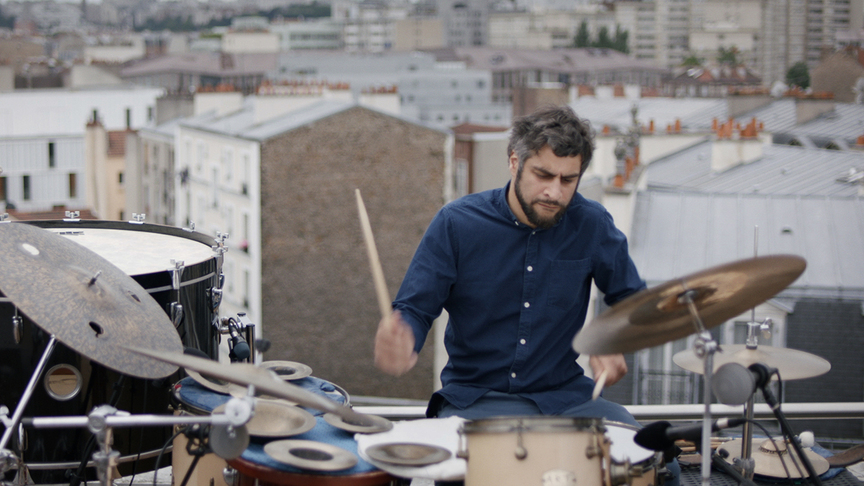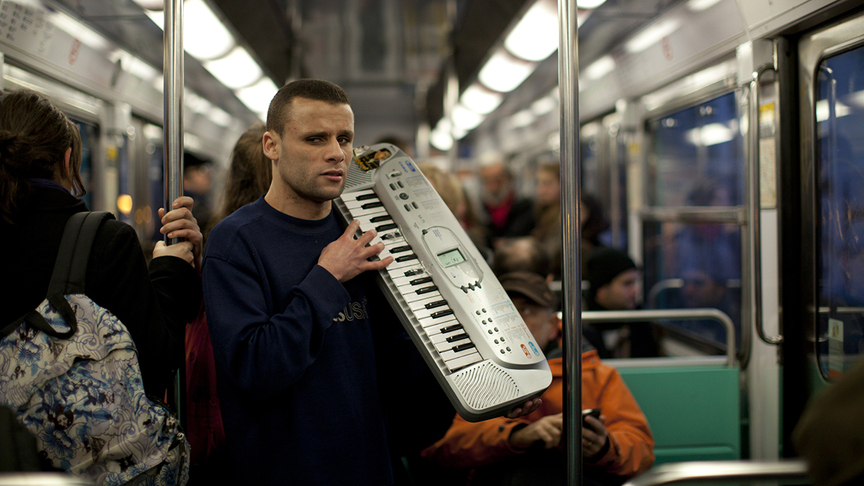-
From Current Issue
-
- Editor’s Letter Fire in the Heart
- Reviews I Gusti Ayu Kadek Murniasih
- Reviews 11th Seoul Mediacity Biennale: “One Escape at a Time”
- Dispatch Networked China
- One on One Monira Al Qadiri on Yukio Mishima
- Essays The rise of independent art spaces in pandemic-era Shanghai
- Features Tuan Andrew Nguyen
- Table of Contents
- Web Exclusives
- Archive
- Subscribe

R
E
V N
E
X
T
Installation view of ANGELICA MESITI’s “Relay League” at Art Sonje Center, Seoul, 2018. Photo by Yeonje Kim. Courtesy Art Sonje Center.
Australian artist Angelica Mesiti’s exhibition “Relay League” at Seoul’s Art Sonje Center examined the ambiguity of language and the use of non-verbal communication through sound and choreography. The show consisted of two large video installations and other works that highlight audio signals as carriers of information in specific settings and communities.
The artist begins with the final Morse code message that the French Navy sent out on January 31, 1997, before their communications system was replaced by newer technology. This last broadcast was essentially an obituary: “Appel à tous. Ceci est notre dernier cri avant notre silence éternel.” (“Calling all. This is our final cry before our eternal silence.”) It was a sound that indicated gentle distress. Mesiti morphed this phrase into a brass and steel sculpture titled Appel à Tous/Calling All (2017), which in Art Sonje Center was hanging from the ceiling above the second floor’s entrance. Dangling in a shape of dots and dashes, the tubular sculpture translates this code of airwave signals to a physical body.
Mesiti takes her interpretation of the fateful phrase even further by translating it into music and choreography. The three-channel video Relay League (2017) was projected onto an installation of white vinyl walls. As the sounds corresponding to each channel bleed into one another, the viewer may at first find this to be disorienting. The first channel features the musician Uriel Barthélémi with a full drum set on a Parisian rooftop. He plays the percussive instruments under daylight, performing soft brushes on the drum skins as well as firm beats with drumsticks. The score is devised based on a complicated calculation of prolonged vowels repeated as a bass and monotones realized in brass sounds from the French Navy’s final Morse code blast. On the second screen, we see two dancers sitting side by side in a studio. A choreographer, Emilia Wibron Vesterlund, murmurs in French and guides the sight-impaired male dancer Sindri Runudde. These two scenes are tied together in the last channel, as choreographer Filipe Lourenço actively engages with Barthélémi’s score in the space where Vesterlund and Runudde were practicing. As the different audio feeds merge together, a new vocabulary based on the French Navy’s message is generated. Though the performers captured in each channel did not communicate with one another, they were responding to the same message, and shared a state of emotional distress and uncertainty.
A similar mode of communication, though via musical arrangement, is present in the four-channel video installation Citizens Band (2012), which was created four years after Mesiti relocated to Paris, tapping into her impressions and experiences as an outsider. In the artwork, the artist features street musicians of different ethnic backgrounds whom she encountered in both France and Australia. They too are outsiders as they live and work in a city removed from their origins, whether in Paris, Sydney or Brisbane. The four channels were mounted in a square formation, creating a four-walled room of sorts, bringing together the four “band” members with viewers in the center. Mohammed Lamourie plays Algerian Raï music with an electric keyboard inside a Parisian metro train. Cameroonian Loïs Geraldine Zongo punches beats with her bare hands in a vacant public swimming pool in Paris—her chosen drum pattern signals distress in her home country. Bukhchuluun Ganburged is seen busking with a Mongolian string instrument called morin khuur outside Sydney. A musician and a taxi driver in Brisbane, Asim Goreshi whistles a Sudanese tune in the dark interior of his cab after hours. The finale phases out in polyphony as the screens broadcast twirling city lights. Though Citizens Band is presented in a sequence, like a relay, each channel is independent from the others, and the four individuals’ musical performances are confident deliveries of their cultures, and emblems of assertion in a foreign setting.
In “Relay League,” Mesiti unpacks the possibility of indefinite and complex modes of communication. Though her videos were devoid of spoken words, their contents are rich, and are only waiting for us to enter and decipher them.
Angela Mesiti’s “Relay League” is on view at Art Sonje Center, Seoul, until February 11, 2018.
To read more of ArtAsiaPacific’s articles, visit our Digital Library.






